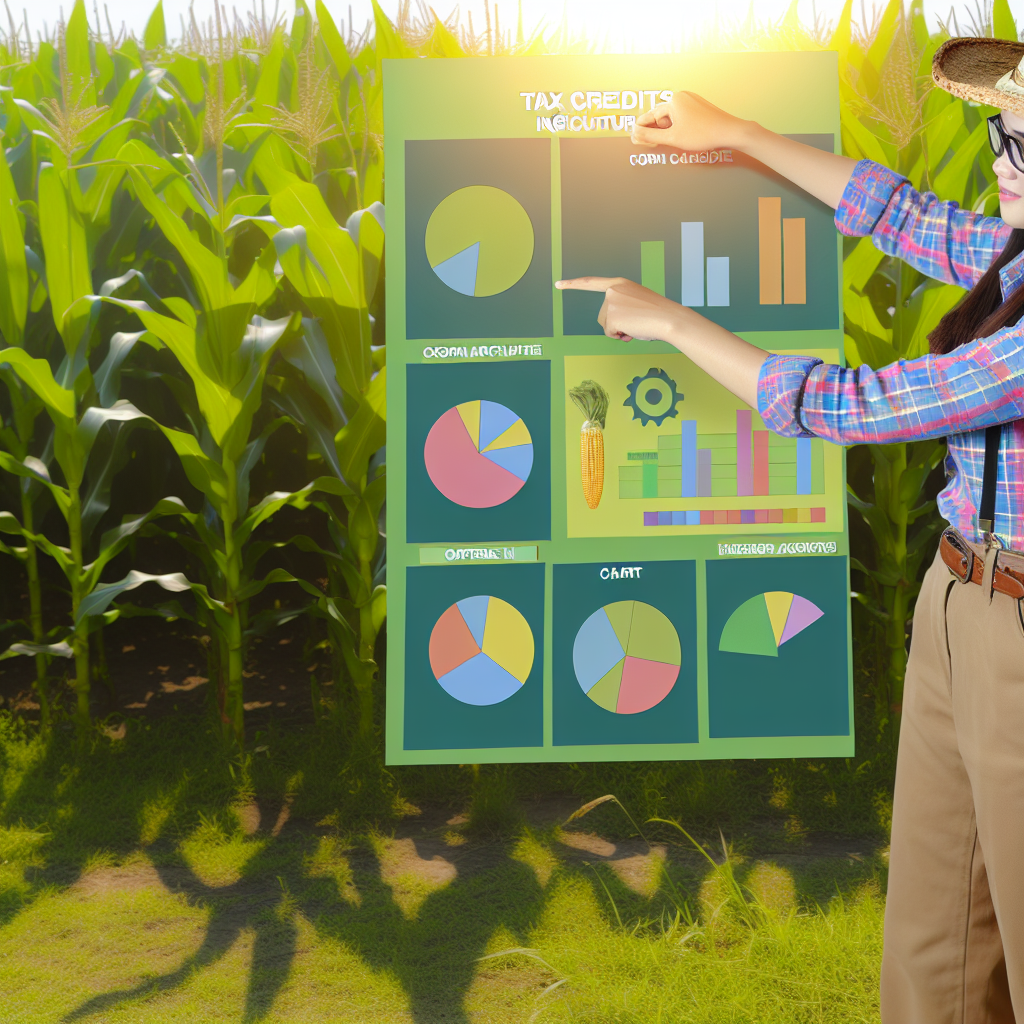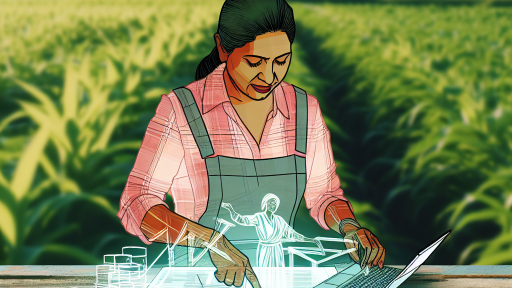Introduction to Agricultural Tax Credits and Incentives
Agricultural tax credits and incentives play a crucial role in supporting farmers.
These financial tools promote sustainable practices and boost agricultural production.
They provide significant tax savings for farmers and agribusinesses.
Understanding the types of credits available can maximize these benefits.
Moreover, knowing how to qualify for these incentives is essential.
Types of Agricultural Tax Credits
Various types of agricultural tax credits exist for farmers.
These can include credits for renewable energy use, conservation practices, and research activities.
For example, the Investment Tax Credit (ITC) supports solar energy installations on farms.
Likewise, the Renewable Electricity Production Tax Credit (PTC) encourages wind energy use.
Benefits of Agricultural Tax Incentives
Tax incentives lead to improved farm profitability.
They reduce operational costs and encourage reinvestment in farm operations.
Additionally, these incentives help enhance the overall sustainability of farming practices.
Farmers can use these credits to implement innovative technologies and techniques.
Eligibility Criteria for Tax Credits
Eligibility criteria for agricultural tax credits vary by program.
Farmers must often meet specific income thresholds or production volumes.
Transform Your Agribusiness
Unlock your farm's potential with expert advice tailored to your needs. Get actionable steps that drive real results.
Get StartedAdditionally, participation in certain conservation programs may be required.
It’s important to maintain accurate records of all agricultural activities.
Navigating the Application Process
Applying for agricultural tax credits can be complex.
Farmers should familiarize themselves with the application requirements.
Furthermore, working with a tax professional can simplify this process.
Tax professionals often help identify all qualifying programs available.
Case Studies of Successful Utilization
Some farms demonstrate the successful utilization of these tax incentives.
For instance, Greenfield Farms adopted solar energy, significantly reducing costs.
Similarly, Maple Avenue Orchards implemented water conservation measures.
These cases illustrate how incentives improve both profitability and sustainability.
Types of Agricultural Tax Credits Available
Federal Tax Credits
Several federal tax credits support agricultural activities.
These credits help farmers reduce their tax liabilities.
For instance, the Investment Tax Credit encourages investment in equipment.
Also, the Renewable Energy Tax Credit promotes sustainable energy use.
Farmers can claim these credits on their federal tax returns.
State-Specific Incentives
Many states offer their own agricultural tax credits.
These credits vary widely between states.
Examples include property tax reductions and sales tax exemptions.
Farmers should check state programs for eligibility and benefits.
Income Tax Credits
Some states provide income tax credits to farmers.
These credits depend on the farmer’s income level and agricultural activities.
For example, Illinois offers a tax credit for grain storage investments.
Such credits can significantly lower taxable income.
Sales and Use Tax Incentives
Sales tax exemptions on farm equipment can reduce expenses.
Showcase Your Farming Business
Publish your professional farming services profile on our blog for a one-time fee of $200 and reach a dedicated audience of farmers and agribusiness owners.
Publish Your ProfileAdditionally, some states exempt purchases of feed and seed.
These savings improve overall farm profitability.
Local and Regional Programs
Local governments may have programs that assist farmers.
These can include grants, low-interest loans, and tax incentives.
Community-supported agriculture initiatives often have financial benefits.
Farmers should explore all options available in their local areas.
Conservation Tax Credits
Conservation tax credits reward sustainability efforts.
Farmers can receive credits for implementing conservation practices.
Examples include preserving wetlands and implementing crop rotation.
Such initiatives help in preserving vital resources.
Specialized Tax Credits
Some credits apply to niche agricultural sectors.
For instance, credits exist for organic farming and specialty crops.
These credits encourage diversity in agricultural production.
Farmers can benefit from understanding these unique opportunities.
Research and Development Credits
Credits also exist for farmers engaged in innovative research.
These credits aim to enhance agricultural productivity.
Investments in new technologies can yield significant tax savings.
Farmers should document all research activities to claim the credits.
Disaster Relief Incentives
In the event of natural disasters, there are tax relief options.
Farmers affected by floods or drought may receive credits.
Insurance claims also impact tax calculations during disasters.
Farmers must stay informed about available support from the government.
Eligibility Requirements for Farmers and Producers
General Criteria
Farmers and producers must meet specific criteria to qualify for tax credits.
These criteria often include the type of agricultural activities they undertake.
Additionally, applicants must demonstrate a focus on farming or production.
Income limits may also apply in certain programs.
Location Requirements
The location of the farm plays a key role in eligibility.
Farmers must typically operate within designated areas or states.
Some programs are available only to those in rural regions.
Moreover, local zoning laws may impact eligibility as well.
Production Standards
Producers must adhere to specific production standards.
These standards often align with sustainable practices.
Certified organic farming can sometimes enhance eligibility for credits.
Producers must also maintain accurate record-keeping for their activities.
Business Structure
The structure of the farming business influences eligibility.
Both sole proprietorships and corporations may qualify.
However, partnerships must meet additional requirements.
Non-profit and cooperative entities may have different eligibility criteria.
Participation in Federal Programs
Participation in federal agricultural programs enhances eligibility for tax incentives.
Farmers enrolled in programs like the Farm Service Agency often have expanded access.
Showcase Your Farming Business
Publish your professional farming services profile on our blog for a one-time fee of $200 and reach a dedicated audience of farmers and agribusiness owners.
Publish Your ProfileCompliance with federal guidelines is critical for gaining benefits.
Regular updates with program changes help ensure ongoing eligibility.
Documentation and Application Process
Farmers need to provide detailed documentation during the application process.
Relevant tax records and production reports should be submitted.
Additionally, proof of compliance with local regulations is often required.
Proper documentation helps streamline the approval process.
You Might Also Like: Strategies to Utilize Farm Financial Aid Wisely
How to Apply for Agricultural Tax Credits
Understanding Eligibility Criteria
Before applying, know the eligibility requirements.
Most programs require applicants to be active farmers or ranchers.
Additionally, verify if your agricultural activities qualify for credits.
Review local, state, and federal guidelines thoroughly.
Gathering Required Documentation
Compile all necessary documents before applying.
Typical documents include tax returns and financial statements.
Also, prepare production records and sales receipts.
Ensure all files are accurate and up-to-date.
Completing the Application Form
Locate the correct application form online or at local offices.
Fill in the form completely and accurately.
Double-check for any missing information before submission.
Your submission will often require a signature and date.
Submitting Your Application
Submit your application according to the guidelines provided.
Online applications may require specific formats and file sizes.
Alternatively, mailing your application may be an option.
Keep copies of all submitted materials for your records.
Following Up on Your Application
After submitting, confirm that your application was received.
Check the status of your application after a few weeks.
Contact the appropriate agency if you encounter issues.
Taking these steps can help avoid unnecessary delays.
Explore Further: Role of Farm Subsidies in Agricultural Growth
Benefits of Utilizing Tax Credits in Agriculture
Enhanced Financial Stability
Tax credits provide essential financial relief to farmers.
They lower the overall tax burden, increasing cash flow.
As a result, farmers can invest more in their operations.
This investment often leads to increased productivity and efficiency.
Encouragement of Sustainable Practices
Many tax credits incentivize sustainable farming methods.
For instance, credits are available for renewable energy projects.
These practices help reduce environmental impact significantly.
Moreover, they support long-term agricultural viability.
Support for Technological Advancements
Tax credits promote the adoption of modern agricultural technologies.
Farmers can leverage these credits to purchase advanced equipment.
This enhancement leads to increased crop yields and quality.
Additionally, it facilitates precision agriculture practices.
Showcase Your Farming Business
Publish your professional farming services profile on our blog for a one-time fee of $200 and reach a dedicated audience of farmers and agribusiness owners.
Publish Your ProfileAccess to Expert Assistance
Tax credit programs often connect farmers with expert advisors.
These professionals provide guidance on maximizing benefits.
Farmers can receive tailored advice on eligibility and applications.
Consequently, they can navigate the complexities of these programs successfully.
Encouragement of Investment in Infrastructure
Infrastructure improvements are crucial for agricultural efficiency.
Tax credits can help cover the cost of necessary upgrades.
This includes improvements to irrigation systems or storage facilities.
Ultimately, such investments lead to enhanced productivity.
Uncover the Details: How Tax Policies Impact Modern Farming
Common Mistakes to Avoid When Claiming Tax Credits
Not Understanding the Eligibility Requirements
Many farmers overlook the specific eligibility criteria for tax credits.
Understanding these requirements can prevent costly mistakes.
Conduct thorough research before applying for any credits.
Failing to Keep Accurate Records
Accurate documentation is essential when claiming tax credits.
Farmers often neglect to maintain detailed records of expenses.
Without proper records, it may become difficult to substantiate claims.
Missing Deadlines
Missing application deadlines can result in lost opportunities.
Keep track of important dates related to tax credits.
Set reminders to avoid missing submission deadlines.
Assuming All Tax Credits Apply
Not every tax credit applies to every agricultural operation.
Review available incentives that specifically benefit your farming activities.
Focusing on relevant credits can maximize potential savings.
Neglecting to Consult Professionals
Many farmers attempt to navigate tax credits without expert help.
Consulting a tax professional can offer valuable insights.
Expert advice helps ensure compliance with current regulations.
Overlooking Changes in Tax Laws
Tax laws and regulations frequently change.
Farmers must stay informed about these changes to remain compliant.
Regularly review updates related to agricultural tax credits.
Not Utilizing Available Resources
Farmers sometimes fail to use available resources for assistance.
State and federal websites provide useful information.
Take advantage of educational seminars and workshops.
Delve into the Subject: Common Tax Mistakes Farmers Should Avoid

Impact of Agricultural Tax Incentives on Sustainable Practices
Encouraging Eco-Friendly Farming
Tax incentives promote eco-friendly farming methods.
These incentives encourage farmers to adopt sustainable practices.
Consequently, more farmers transition to organic and regenerative farming.
For instance, reduced taxes on organic certification can be beneficial.
This leads to environmental benefits and better soil health.
Financial Support for Green Technologies
Tax credits provide financial support for green technologies.
Farmers can invest in renewable energy sources.
Additionally, investments in water conservation technologies become feasible.
These technologies include solar panels and efficient irrigation systems.
Showcase Your Farming Business
Publish your professional farming services profile on our blog for a one-time fee of $200 and reach a dedicated audience of farmers and agribusiness owners.
Publish Your ProfileAs a result, farmers reduce their overall environmental footprint.
Enhancing Research and Development
Tax incentives also boost research and development in agriculture.
Farmers can access funding for innovative sustainable practices.
Such innovations may involve new crop varieties or pest management solutions.
These advancements improve crop yields and reduce chemical usage.
Thus, overall agricultural efficiency significantly increases.
Community Impact and Education
Tax incentives foster community engagement in sustainability practices.
They encourage local workshops and educational programs.
Farmers learn about sustainable farming techniques and benefits.
This knowledge-sharing helps communities adopt eco-friendly habits.
Moreover, it creates a culture of sustainability within the agricultural sector.
Long-Term Environmental Benefits
Using tax incentives leads to long-term environmental benefits.
Farmers who engage in sustainable practices improve land health.
This practice enhances biodiversity and boosts ecosystem services.
Healthy ecosystems can better withstand climate challenges.
Ultimately, this fosters a resilient agricultural landscape for future generations.
State-Specific Tax Incentives for Farmers
Overview of State Tax Credits
Every state offers unique tax credits for farmers.
These credits can significantly reduce their tax liabilities.
Understanding these incentives is crucial for farmers to maximize savings.
Examples of State Tax Incentives
For instance, California provides tax credits for solar energy investment.
This initiative encourages farmers to adopt renewable energy practices.
Likewise, Texas offers benefits for water conservation technologies.
Pennsylvania, on the other hand, provides tax relief for certain agricultural equipment.
Eligibility Requirements
Each state sets specific eligibility criteria for its tax credits.
Farmers must often demonstrate their sustainable practices.
Additionally, they may need to submit documentation annually.
Staying updated on these requirements is vital for maintaining eligibility.
How to Apply for State Incentives
Applying for these tax incentives typically involves several steps.
Farmers should first research available credits in their state.
Next, they need to gather necessary documentation.
Finally, they submit their applications to the state’s tax authority.
Impact of State Incentives on Agriculture
State incentives play a significant role in agricultural sustainability.
Farmers are more likely to invest in eco-friendly practices.
Consequently, these incentives contribute to environmental health.
Moreover, they can enhance the economic viability of farms.
Future Trends in Agricultural Tax Incentives
Looking ahead, we expect more states to enhance their tax incentive programs.
As sustainability becomes a priority, tax benefits will likely increase.
Farmers should prepare for changes in legislation affecting their tax credits.
Staying informed enables them to optimize their financial planning.
Future Trends in Agricultural Tax Credits and Incentives
The Shift Towards Sustainability
Farmers increasingly seek sustainable practices in agriculture.
Showcase Your Farming Business
Publish your professional farming services profile on our blog for a one-time fee of $200 and reach a dedicated audience of farmers and agribusiness owners.
Publish Your ProfileNew policies are emerging to encourage eco-friendly farming methods.
Tax credits may focus on renewable energy and reduced chemical usage.
Incentives may promote organic farming to improve soil health.
Technology Integration
Technological advancements are reshaping agriculture.
Farmers are adopting precision agriculture techniques to enhance efficiency.
Credits will likely reward those investing in smart farming technologies.
These technologies can lead to higher yields with reduced resource consumption.
Policy and Legislative Developments
Governments are likely to revise agricultural policies regularly.
Legislators may introduce new tax incentives to support local farms.
There may be increased funding for research and development in agriculture.
Farmers will need to stay informed about these changes.
Increased Focus on Food Security
Food security remains a priority in agricultural policy discussions.
Tax incentives could be aligned with local food production initiatives.
Support for farmers can enhance community resilience against food shortages.
Programs may encourage diversification of crops to ensure stability.
Collaboration with Non-Governmental Organizations
NGOs are playing a significant role in agricultural development.
They often partner with farmers to promote sustainable practices.
Collaborative efforts may lead to new tax incentives for community projects.
Such partnerships can optimize resource allocation and training opportunities.
Additional Resources
The Policy Landscape for Agricultural Bioenergy
Economics of Biofuels | US EPA




